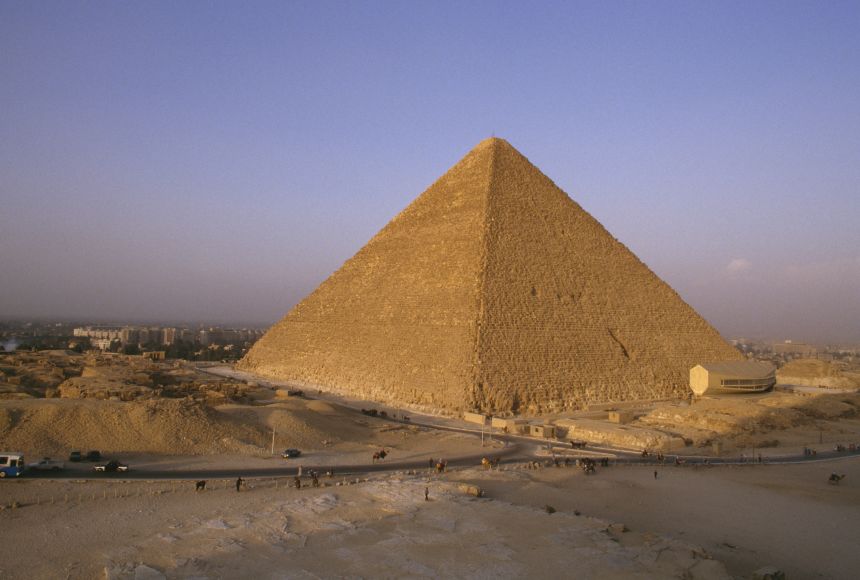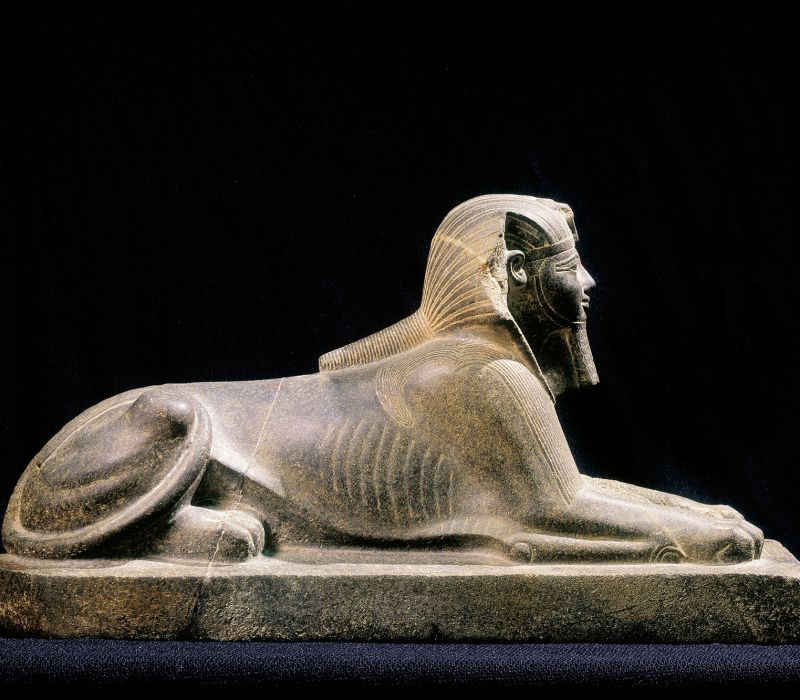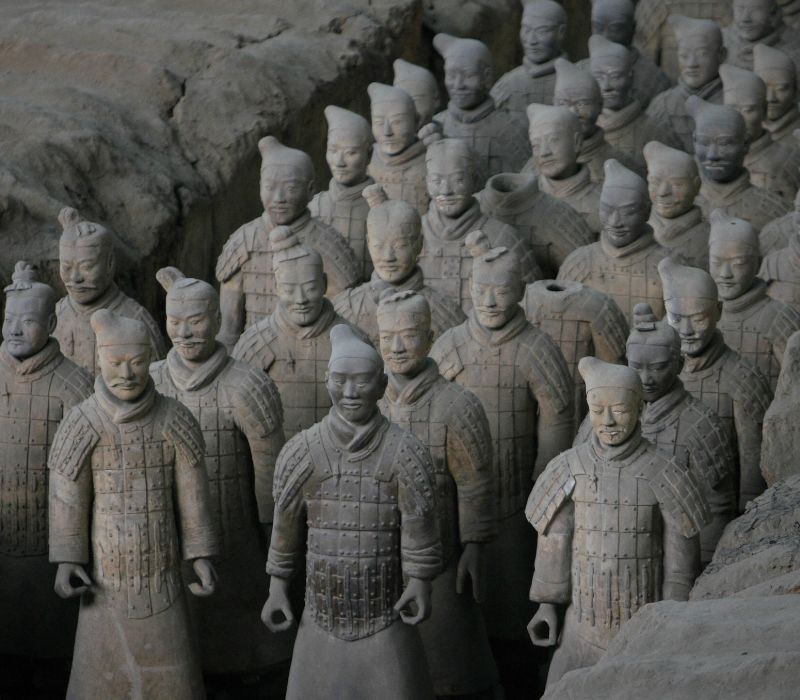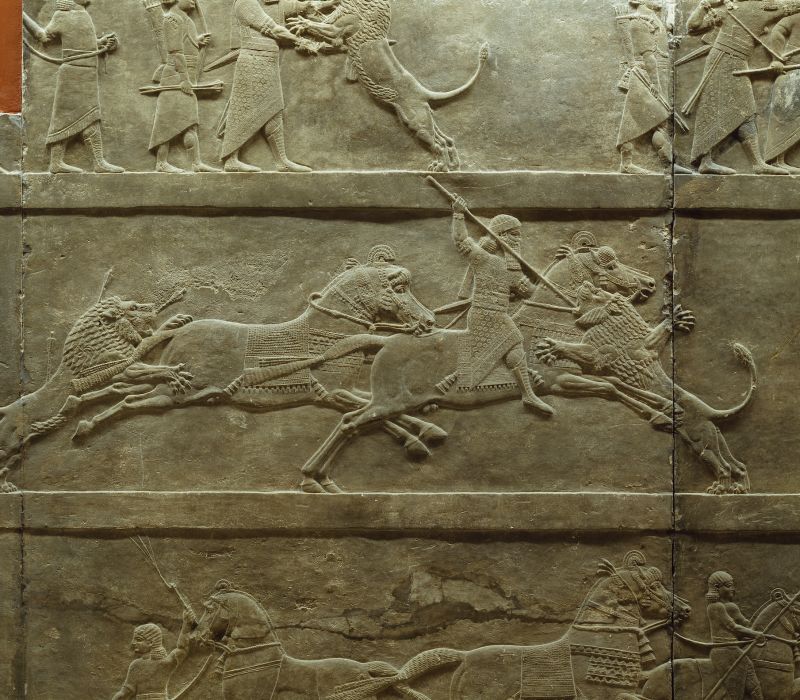EducationMenu
ARTICLE
LEVELED
Seven Wonders of the Ancient World
The Seven Wonders of the Ancient World, selected by Hellenic travelers and noted in poetry and other arts, tell the stories of human imagination and technical aptitude, and how civilizations left their marks on the world and culture.
GRADES
3 – 12
SUBJECTS
Social Studies, Ancient Civilizations, World History
IMAGE
The Great Pyramid
The Great Pyramid, the largest of the Pyramids of Giza, is the only Great Wonder still standing. It was build more than 4,000 years ago.
PHOTOGRAPH BY JAMES P. BLAIR

Leveled by
Selected text levelDefaultBACKGROUND INFOVOCABULARY
Amid the march of progress throughout the modern world, evidence of Earth’s rich past exists in historical constructions that tell stories of human achievement. Among these, seven were deemed “wonders”: hallowed examples of the contributions of ancient Mediterranean and Middle Eastern civilizations.
These Seven Wonders of the Ancient World were originally chosen by Hellenic travelers passing through Persian, Babylonian, and Egyptian lands. They made careful note of these structures in travel guides, artwork, and poems. Although lists of wonders were created as early as the fifth century B.C.E., the most famous example was developed by the second-century Greek writer Antipater of Sidon, who celebrated these feats of human ability through poetry.
While these constructions are stunning achievements of ancient engineerning, they don’t include marvels from many of the ancient civilizations of Africa, Europe, and Asia, and the Americas, which were unknown to the Hellenic peoples.
Although these Seven Wonders are still celebrated today, they show the fleeting nature of even the grandest physical achievements—nature, human behavior, and the passage of time have destroyed all but one.
Great Pyramid of Giza
The Great Pyramid, the only Wonder that still exists, stood as the world’s tallest human-made structure for nearly 4,000 years. Erected around 2560 B.C.E. on the west bank of the Nile River, the Great Pyramid served as the tomb of the fourth-century pharaoh Khufu (Cheops). It is the largest of the three Pyramids at Giza.
The proportions of the Pyramid are colossal—even for the modern era. The original height from the base to the peak was around 147 meters (482 feet)—though time has worn away the height to around 138 meters (451 feet). The length of each side at the base averages around 230 meters (756 feet). Over its 20-year construction period, around 2.3 million stone blocks were crafted to create this 5.22-million-metric-ton (5.75-million-ton) monolith.
Hanging Gardens of Babylon
Despite being named one of the Seven Ancient Wonders, there is not much firsthand evidence that the gardens actually existed. Those who claimed to have witnessed the gardens, including Greek historians Strabo and Diodorus Siculus, described them as marvels of agricultural engineering. An amazing array of blooming flowers, luscious fruit, exotic foliage, and impressive waterfalls were said to have filled them. The hanging gardens were believed to have been built around 600 B.C.E., by Nebuchadnezzar II, who ruled Babylonia from 605–562 B.C.E.
Statue of Zeus
It took the most renowned sculptor of the ancient era, Phidias, to create a statue worthy of celebrating the fabled god Zeus. Housed in the Temple of Zeus at Olympia in western Greece, the statue showed Zeus seated on a throne crusted in gold, precious gems, ivory, and ebony. Zeus held a statue of Nike, the goddess of victory, in his right hand. A scepter topped with an eagle was held in his left hand.
Many of those who gazed upon the 12-meter (40-foot) statue commented that the proportions of Zeus inside the temple were off. Regardless, the statue was revered by most as a stunning earthly representation of the great god that filled passersby with awe—until it was destroyed in an earthquake in the fifth century B.C.E.
Temple of Artemis
In Ephesus (an ancient city in what is now western Turkey), a temple was constructed that was reportedly so magnificent it caused Philo of Byzantium to say:
“I have seen the walls and Hanging Gardens of ancient Babylon, the statue of Olympian Zeus, the Colossus of Rhodes, the mighty work of the high Pyramids and the tomb of Mausolus. But when I saw the temple at Ephesus rising to the clouds, all these other wonders were put in the shade.”
The temple, originally constructed to celebrate Artemis, the Greek goddess of the hunt, became a revered place of worship. It went through several phases of destruction and rebuilding. The most famous iteration, completed in 550 B.C.E., was about 115 meters (377 feet) long, 55 meters (200 feet) wide, included 127 Ionic-styled columns, and was decorated with fine sculptures and paintings.
Its final destruction was initiated by Herostratus, who sought fame by destroying the beautiful creation. Its ruin by Herostratus and the ravages of time have obliterated all but a few remains of the grand temple.
Mausoleum of Halicarnassus
Among the most impressive structures to house the deceased was the Mausoleum of Halicarnassus. The mausoleum was designed between 353 and 350 B.C.E. by the Greek architects Satyrus and Pythis. It was created for Maussollos, a governor in the Persian Empire, and his wife and sister Artemisia II of Caria, who initiated its construction upon her husband’s death.
The mausoleum stood approximately 41 meters (135 feet) high and was adorned with intricate exterior carvings and precious works of art. Despite standing for centuries and even surviving a raid by Alexander of Macedonia, a series of earthquakes finally rocked it to its core. All that remains are a few scattered pieces of its foundation.
Colossus of Rhodes
Visitors to ancient Rhodes, an island in the eastern Aegean Sea, were greeted by a statue of the Greek god Helios. Erected between 292 and 280 B.C.E. by the sculptor Chares of Lindos, and standing at about 33 meters (105-110 feet), the statue was a victory monument designed to honor the defeat of the invading army of Demetrius in 304 B.C.E.
After standing for only 56 years, an earthquake destroyed the statue in 224 B.C.E. Despite snapping at the knees and falling onto the island, the ruins remained a popular attraction for more than 800 years.
Pharos (Lighthouse) of Alexandria
This ancient lighthouse, considered a technical masterpiece that served as the model for all lighthouses that followed, was constructed on Pharos, an island in the harbor of Alexandria in Egypt, known as Kemet by its ancient citizens. It was completed between 285 and 247 B.C.E.
Standing over 107 meters (350 feet) tall and conceived as a navigational landmark for voyagers along the Egyptian coast, the lighthouse was constructed in three distinct stages: a square stone base; an octagonal middle section; and a cylindrical section at the top. At the apex, a mirror was erected to reflect sunlight during the day. At night, a fire was lit to guide travelers.
The Lighthouse of Alexandria was severely damaged by earthquakes in 965 C.E., 1303 C.E., and 1323 C.E. It was completely gone by 1480 C.E. Today, visitors to the site where the lighthouse stood encounter the Egyptian fort Qaitbay, which was built using some of the stones from the lighthouse ruins.
adorn
Verb
to decorate or add beauty to.
agriculture
Noun
the art and science of cultivating land for growing crops (farming) or raising livestock (ranching).
apex
Adjective, Noun
tip, point, top, or summit.
architect
Noun
person who designs buildings or other large structures.
deceased
Adjective
dead.
erect
Verb
to build or raise.
exterior
Adjective, Noun
on the outside or outdoors.
fabled
Adjective
legendary, celebrated, and largely fictitious.
foliage
Noun
leaves of a plant, or the leaves and branches of a tree or shrub.
gaze
Noun
steady look or line of sight.
hallowed
Adjective
holy or sacred.
intricate
Adjective
very detailed and complex.
iteration
Noun
version or form.
mausoleum
Noun
impressive tomb or burial site.
obliterate
Verb
to destroy completely.
ravage
Verb
to destroy or ruin.
representation
Noun
symbol of something.
revere
Verb
to show deep respect, often in a religious sense.
ruin
Verb
to destroy.
Credits
User Permissions
RELATED RESOURCES

Key Figures of Ancient Egypt
Due to the limited nature of the information we have about ancient Egypt, the historical figures that we call key is a more limited group than it would be in contemporary times. The article explores three groups of key figures: those involved in developing the form of the pyramid, famous Egyptian rulers, and important non-Egyptian rulers.237

Imperial China’s Dynasties
From the mythic origins of the Chinese dynasties to the eventual fall of the last imperial house, Chinese emperors have long fought to maintain control over one of the most enduring empires on Earth. The rise and fall of various imperial families oversaw waves of innovation and cultural advancement.228

Beautiful Babylon: Jewel of the Ancient World
Ruled by Hammurabi, restored by Nebuchadrezzar, conquered by Cyrus—this city in the heart of Mesopotamia was both desired and despised, placing it at the center stage of the dawn of history.247
National Geographic Headquarters
1145 17th Street NW
Washington, DC 20036
ABOUT
National Geographic SocietyNatGeo.comNews and ImpactContact Us
EXPLORE
Our ExplorersOur ProgramsEducationNat Geo LiveStorytellers CollectiveTraveling Exhibitions
JOIN US
Ways to GiveApply for a GrantCareers
CONNECT
National Geographic Society is a 501 (c)(3) organization. © 1996 – 2024 National Geographic Society. All rights reserved.Privacy Notice|Sustainability Policy|Terms of Service|Code of Ethics|Your Privacy Choices
Leave a Reply